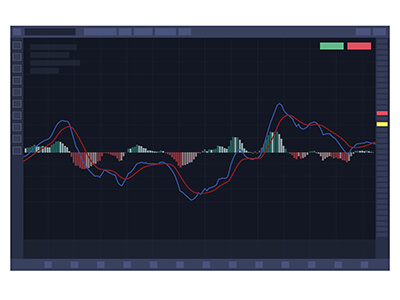Spotting Shifts in Momentum:
Using Convergence and Divergence with MACD
The Moving Average Convergence & Divergence (MACD) is a popular tool for forex traders. It helps gauge trend strength and potential turning points. A key component of understanding MACD signals is interpreting the convergence and divergence of its moving averages.
Convergence and Divergence: Decoded
Convergence:
Convergence refers to two moving averages moving closer together. This can happen in two ways:
- Upward Convergence: When a shorter-term moving average (MA) rises towards a longer-term MA, it suggests increasing momentum in the current trend.
- Downward Convergence: When a shorter-term MA falls towards a longer-term MA, it suggests weakening momentum, potentially foreshadowing a trend reversal.
Divergence:
Divergence occurs when the moving averages move in opposite directions. This can indicate a dissonance between price and momentum, which can signal a potential trend shift.
- Bullish Divergence: Price makes lower lows, but the MACD line forms higher lows (or creates a higher low while the price continues to trade flat). This suggests underlying buying pressure that may eventually overcome selling pressure and push prices higher.
- Bearish Divergence: Price makes higher highs, but the MACD line forms lower highs (or creates a lower high while the price continues to trade flat). This suggests underlying selling pressure that could lead to a price decline.
These concepts apply across technical analysis, not just the MACD. Imagine the price of a currency pair trending upwards. Initially, a short-term moving average might fluctuate above a long-term moving average. But as the uptrend strengthens, the short-term average converges towards the long-term one, eventually crossing above it (bullish crossover).
Convergence and Divergence in MACD
The MACD itself is a calculation of the difference between two exponential moving averages (EMAs) of a security’s price. By analyzing the movement of the MACD line relative to its signal line (a shorter-term EMA of the MACD itself) and the price action, you can identify convergence and divergence signals.
Convergence:
When the MACD line converges towards the signal line, it can indicate either a continuation of the current trend or a potential trend change.
- If the price continues to trend in the same direction as the convergence, it suggests a continuation of momentum.
- If the convergence is accompanied by divergence between price and MACD, it might be a sign of a trend reversal.
Divergence:
Divergence between the MACD line and price action is a more powerful signal.
- Bullish Divergence: A bullish divergence can precede a trend reversal to the upside.
- Bearish Divergence: A bearish divergence can precede a trend reversal to the downside.
Big Traders’ Take on Convergence and Divergence
While valuable, convergence and divergence signals from the MACD should not be used in isolation. Here’s what some prominent traders consider:
- Confirmation from Other Indicators: Many traders look for confirmation from other technical indicators like volume or relative strength index (RSI) to validate the signals from MACD convergence/divergence.
- False Signals: Divergence doesn’t guarantee a reversal. It simply suggests a possibility. Experienced traders learn to identify and manage false signals.
- Trend Context: The strength of the prevailing trend can influence the reliability of convergence/divergence signals.
By understanding convergence and divergence in the context of MACD and using them in conjunction with other tools, forex traders can gain valuable insights into potential trend shifts and make more informed trading decisions. Remember, successful trading requires a combination of technical analysis, risk management, and experience.
Disclaimer: This article is for informational purposes only and should not be considered financial advice. Please consult with a qualified financial advisor before making any investment decisions.
Happy trading
may the pips be ever in your favor!










